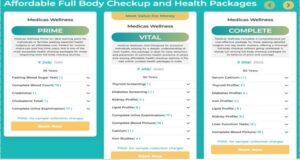Cost-effective Advice Regarding International Roaming and Data Consumption
A good management of data and roaming rates can greatly minimize travel costs without compromising the connectivity. Through savvy planning...

A good management of data and roaming rates can greatly minimize travel costs without compromising the connectivity. Through savvy planning of use, traveling people will have the power to control expense and prevent hassles of surprise bills. The article provides brief, practical tips on how to reduce the costs of international roaming and data usage.
1.Assessing travel needs and data requirements
Prior to departure, a review of expected online activities assists in defining suitable data allocations. Travelers are expected to enumerate important services, including messaging, navigation, and email, and approximate the amount of data consumed each day. As an example, streaming video requires more data than web browsing or map checking. They can estimate probable usage and select packages or tools that best fit the needs without wasting money on unused data. Also, being aware of common usage patterns encourages responsible use practices, such as downloading maps or documents beforehand. This proactive measure means that cost-conscious travelers do not overspend on unnecessary data tiers, which results in a streamlined balance between connection and price.
2.Utilizing local SIM and eSIM aternatives
Using a local prepaid SIM card or enabling an eSIM plan can also offer improved per-megabyte costs compared to regular roaming. Frequent travelers are often offered daily/weekly bundles by local carriers, which decreases unit costs. eSIM technology also simplifies the process by enabling remote provisioning without the need to physically change cards. Travelers must check the compatibility of devices and the availability of the network frequency when choosing this option. Buying SIMs at airports or authorized stores avoids fraudulent offers but can include minor markups. Online price comparison prior to travel and buying with established sellers can prevent surprises. Selecting a local or eSIM option, budget travelers can take advantage of competitive market pricing and stay connected over high-speed networks at a fraction of the cost of traditional roaming. Others even provide multi-country regional packages where data can be accessed across borders. Also, it is easy to manage consumption by using carrier apps to track their consumption and top up easily. This versatility renders local SIMs and eSIMs optimal in long-term travel or work-from-home scenarios, providing greater agency over costs without compromising the quality of internet connection during the trip.
3.Leveraging wi‑fi hotspots and offline tools
The use of existing Wi‑Fi networks would reduce data costs significantly. Hotspots in lodgings, cafes, and social areas are available at no or minimal cost, permitting intense use to move offline, e.g., media streaming or file downloads. But open networks are not safe; the personal data are exposed to some dangers when transacting, but a virtual private network (VPN) protects personal information. Real-time data requirements are reduced with offline tools such as downloaded maps, language translation packs, and guidebooks. Travelers must ensure synchronization of calendars, email archives, and other critical documents to be accessed offline before leaving cell coverage. The combination of Wi‑Fi usage and the preloaded resources means that even daily data consumption is needed only to send messages or perform some fast searches, thus minimizing the risk of exposure to increased mobile data fees. Also, turning off background app refresh, automatic updates, and location services when not necessary will help to use even less data.
4.Monitoring usage with data management apps
The ability to view consumption in real-time gives travelers the freedom to switch networks and control limits, with a choice of whether to switch data roaming on or off depending on usage and the current prices. Specialized applications give detailed analysis of daily and per-application usage with warnings at limit approaches. Through these reports, users can discover data thirsty applications and can disable background refresh or auto update functionality. Granular permissions can be disabled on some operating systems as well, permitting only apps that require cellular connection. Constant checking will eliminate sudden overage fees and promote flexible behavior, like switching to text messages instead of video calls when close to the limit. With proper consumption insights, travelers do not have to sacrifice critical connectivity to stay within budget.
5.Comparing international roaming package options
Comparison of different plan structures will show which are the most cost effective on certain itineraries. They can provide tiered bundles (with pay-as-you-go rates to fixed fee daily passes) or regional packages with coverage across many countries in a single international roaming package. Travelers are advised to multiply per-day rates by the number of days of the trip and compare with other local or eSIM rates. Others have high voice and text allowances that might be redundant to data-heavy users. Reading through the terms-including speed throttling beyond particular thresholds-guarantees that the selected options match the expectations. Breaking down the cost elements and fine print, cost-sensitive travellers can choose the best mix of voice, text and data bundles. It is also prudent to determine the availability of customer service in the event of troubleshooting during the trip. Moreover, travelers should review refund policies in cases of unused data or early cancelations of plans to prevent undesirable surprises and remain versatile in case of alterations in plans.
6.Adopting preventive measures to avoid overages
Unexpected charges can be avoided with simple modifications. Automatic app updates via cellular networks can be disabled, preventing large downloads. Activating compression options in web browsers compresses images and page loading quantities. Disabling push notifications on nonessential apps saves data due to reduced background activity. Setting large attachments to send only when using the Wi‑Fi also minimizes cellular usage. Billing zones and peak hours are other considerations travelers should clarify, as certain plans charge more at specific times. A portable Wi‑Fi hotspot, shared between devices, could provide better per‑gigabyte rates when traveling in a group. Such measures can be incorporated into daily habits and maintain constant connectivity, but prevent expensive overages.
Conclusion
The key to cost‑effective international roaming is strategic planning, monitoring of usage, and the selection of local, eSIM, and provider bundles. Travelers reduce the cost of data access by optimizing Wi‑Fi, offline content, and prevention settings. All of these steps will guarantee uninterrupted connectivity without any financial surprises.






